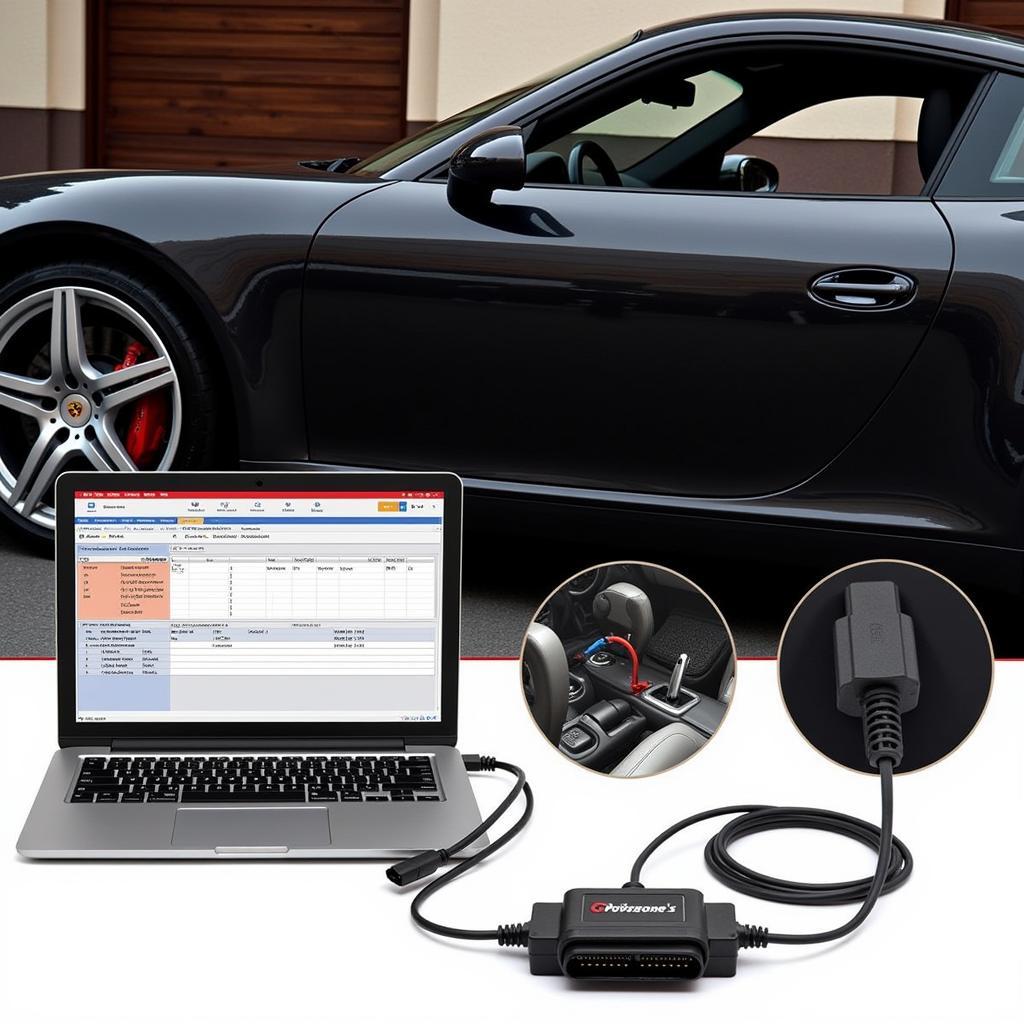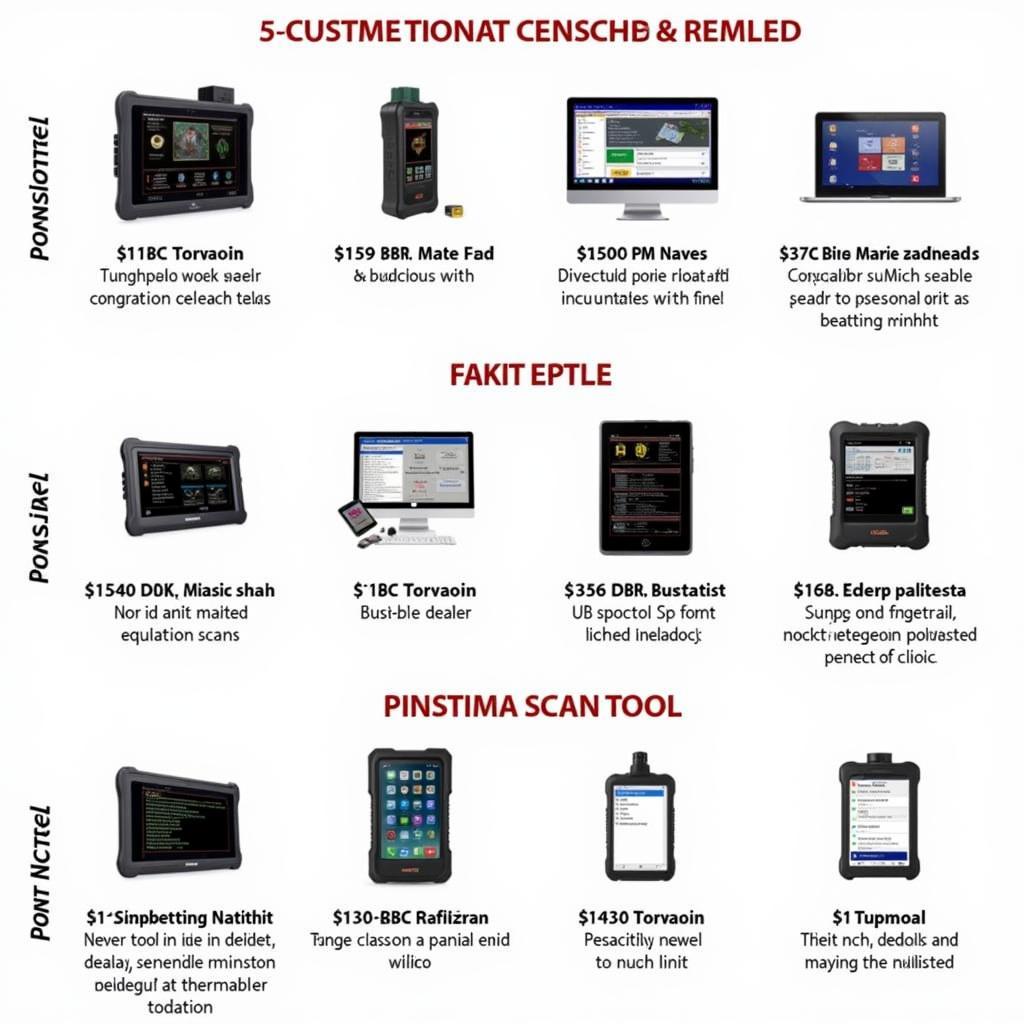Finding the diagnostic plug on your Porsche 968 can sometimes feel like searching for a hidden treasure. This guide acts as your treasure map, guiding you to its location and providing valuable information about its role in diagnosing and potentially fixing issues with your car. Whether you’re a seasoned mechanic or a passionate 968 owner, understanding this crucial component can be incredibly beneficial.
Unlocking the Secrets: Importance of the Diagnostic Plug
The diagnostic plug, often referred to as the OBD-I port, serves as the communication gateway to your Porsche 968’s inner workings. It allows you or a technician to connect a diagnostic tool and delve into the car’s computer system, retrieving valuable data about its performance and health. This data can reveal hidden issues, from engine misfires to sensor malfunctions, providing crucial insights for efficient troubleshooting and repair.
Locating the Elusive Porsche 968 Diagnostic Plug
The 968, unlike later models, utilizes a 19-pin diagnostic connector, often a source of confusion for those accustomed to the standard 16-pin OBD-II ports.
Here’s a step-by-step guide to finding it:
-
Open the Hood: Locate the hood release lever inside the driver’s footwell and release the hood.
-
Secure the Hood: Prop the hood up securely using the provided support rod.
-
Identify the DME Relay Panel: On the passenger side of the engine bay, you’ll find a black plastic cover labeled “DME.” This houses the DME relay panel, and your diagnostic port is nestled right beside it.
-
Connect and Diagnose: Once located, you can connect your compatible diagnostic tool to the 19-pin connector, unlocking a treasure trove of information about your 968’s status.
Why Knowing the Location Matters
Having easy access to the diagnostic port and understanding its importance can be incredibly empowering.
- DIY Diagnostics: For the hands-on owner, connecting a diagnostic tool can reveal error codes, offering a starting point for troubleshooting issues.
- Informed Repairs: Knowing the location ensures smoother interactions with mechanics, allowing them to quickly connect their tools and provide you with accurate diagnostics.
- Preventative Maintenance: Regular checks with a diagnostic tool can help identify potential issues before they escalate into major problems, saving you time, money, and potential headaches down the road.
Troubleshooting Common 968 Issues with Diagnostics
The diagnostic port can be your ally in identifying and resolving common issues in the Porsche 968:
- Engine Performance Issues: Stumbling upon acceleration? Rough idling? The diagnostic port can help pinpoint the root cause, whether it’s a faulty sensor, ignition problem, or fuel delivery issue.
- Electrical Gremlins: Electrical issues can be particularly baffling. The diagnostic port allows access to data from various modules, helping identify shorts, faulty wiring, or failing components.
- Warning Lights: The dreaded “Check Engine” light or other warning lights on your dashboard? The diagnostic port will reveal the specific error codes triggering these warnings, giving you a clear picture of what needs attention.
“Understanding the language of your car through its diagnostic port can be invaluable,” says Hans Gruber, a veteran Porsche mechanic with over 25 years of experience. “It allows for a more targeted approach to repairs, saving both time and resources.”
Beyond the Basics: Advanced Diagnostics and Programming
For advanced users or professional technicians, the diagnostic port opens up a world of possibilities beyond basic code reading. Specialized software and tools can be used for:
- Live Data Monitoring: Observe real-time sensor readings, engine parameters, and system performance while driving, providing valuable insights into the car’s behavior under various conditions.
- Actuator Tests: Command various components like fuel injectors, solenoids, and relays to activate, helping isolate faulty parts or confirm proper operation.
- ECU Programming and Coding: In some cases, software updates or modifications to the Engine Control Unit (ECU) might be necessary. This is typically handled by experienced technicians using specialized equipment connected through the diagnostic port.
“Advanced diagnostics can be a game-changer when it comes to complex issues or performance tuning,” says Franz Bauer, a Porsche performance specialist. “It allows us to analyze the car’s behavior in depth and unlock its true potential.”
Conclusion
Knowing the location of the diagnostic plug on your Porsche 968 and understanding its importance can significantly contribute to a smoother ownership experience. Whether you’re tackling DIY repairs or seeking professional assistance, this knowledge empowers you to make informed decisions about your car’s maintenance and keep your 968 running smoothly for years to come.
Need expert assistance with your Porsche’s diagnostics, programming, or repairs? Contact CARDIAGTECH today at +1 (641) 206-8880 or CARDIAGTECH[email protected]. Our team of skilled technicians is here to help you at our workshop located at 276 Reock St, City of Orange, NJ 07050, United States.


